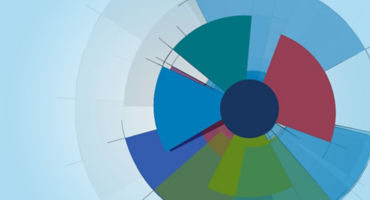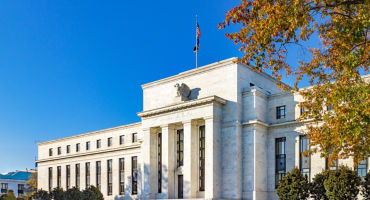- Multi-Asset Strategist
Skip to main content
- Funds
- Insights
- Capabilities
- About Us
- My Account
Our Funds
Fund Documents
Global Multi-Strategy Fund
United States, Intermediary
Changechevron_rightThank you for your registration
You will shortly receive an email with your unique link to our preference center.
Global Multi-Strategy Fund
The views expressed are those of the authors at the time of writing. Other teams may hold different views and make different investment decisions. The value of your investment may become worth more or less than at the time of original investment. While any third-party data used is considered reliable, its accuracy is not guaranteed. For professional, institutional, or accredited investors only.
As inflation data has come in higher than expected recently, the number of Fed rate cuts expected by the market in 2024 has fallen from six at the beginning of the year to just one or two. By the end of April, the 10-year US Treasury yield had risen more than 80 bps year to date and the Bloomberg US Aggregate Bond Index had returned around -3%.
While the Fed decision to hold off on rate cuts for an extended period (it’s been nine months since the central bank stopped hiking rates) may be disappointing to the market, it does not necessarily scuttle the case for owning bonds. We saw a similar situation following the Fed tightening cycle of 2004 – 2006. The Fed hiked rates 17 times during that cycle (versus 11 in the current cycle) and then was “on hold” for 15 months before delivering the first rate cut in September 2007.
Despite the lengthy delay, bonds outperformed cash over the one-, two-, and three-year periods following the last hike in June of 2006 (Figure 1). For example, over the two years after the June 2006 rate hike, cash returned 9%, but government bonds returned 16%, the aggregate index 14%, and corporate bonds 11%. In Figure 2, we can see that yields bounced around in the year following the last rate hike of 2006 and then declined the following year as the Fed’s cutting cycle began (in September 2007), producing capital gains for bonds.
We would offer three takeaways for investors to consider:
There are risks, of course. Not long after the 2004 – 2006 tightening cycle and the rate cuts that followed, we saw the global financial crisis emerge and corporate bond spreads blow out due to liquidity strains in the financial system. Today, while not impossible, it is difficult to envision rate cuts against a backdrop of a severe recession, given that economic growth and employment are solid and there are few excesses in corporate or consumer balance sheets. We think the more likely risk is the potential for the Fed to pivot back to rate hikes if inflation remains stubbornly above its 2% target. But in his May 1 press conference, Fed Chair Jerome Powell said the Federal Open Market Committee’s working assumption is that the next move will still be a cut given restrictive policy and signs of labor market softening. He did say that it will take longer than expected to get to rate cuts, as policy tightening and other post-pandemic adjustments are working their way through the economy with a lag. But he was also more explicit about possible paths to a rate cut than a rate hike.
Experts


Opportunity ahead: Optimism or illusion?
Continue readingWeekly Market Update
Continue readingBy
The spending bubble driving corporate profits looks set to burst
Continue readingBy
FOMC: Easing into uncertainty
Continue readingFinancing the AI boom: credit markets at a crossroads
Continue readingLow tide, sharp eyes: What to pick up
Continue readingURL References
Related Insights
Get our latest market insights straight to your inbox.
Thank you for your registration
You will shortly receive an email with your unique link to our preference center

Opportunity ahead: Optimism or illusion?
Explore our latest views on risks and opportunities across global capital markets.

Weekly Market Update
What do you need to know about the markets this week? Tune in to Paul Skinner's weekly market update for the lowdown on where the markets are and what investors should keep their eye on this week.
By

The spending bubble driving corporate profits looks set to burst
US corporate profits have been fueled by government deficits, low rates, and consumption — drivers now at risk, raising questions about the sustainability of market valuations.
By

Monthly Market Review — November 2025
A monthly update on equity, fixed income, currency, and commodity markets.

FOMC: Easing into uncertainty
Fixed Income Portfolio Manager Jeremy Forster profiles the Fed's December rate cut, labor market trends, inflation pressures, and the role of anticipated changes to FOMC leaders in 2026.

Financing the AI boom: credit markets at a crossroads
Fixed Income Portfolio Manager Derek Hynes and Fixed Income Investment Specialist Will Prentis examine how the AI financing boom is transforming credit markets and discuss the opportunities and risks it creates for investors.

Low tide, sharp eyes: What to pick up
Fixed Income Managers Campe Goodman and Rob Burn share their outlook for credit in 2026 and discuss how investors can reposition for an environment where opportunities are harder to find.

Finding durable value amid shifting currents
Fixed Income Strategist Amar Reganti and Investment Director Marco Giordano explore how to approach bond investing in 2026. They see durable value for investors who can flexibly adjust to the shifting currents ahead.

Rapid Fire Questions with Ross Dilkes
In this edition of “Rapid Fire Questions,” fixed income portfolio manager Ross Dilkes shares his views on the Asia credit market—covering the macro outlook, China’s momentum, the most compelling opportunities across the region, and key risks shaping the next 12 months.

Investing in 2026: prepare for inflationary growth
Macro Strategists John Butler and Eoin O'Callaghan share their annual macro outlook and discuss likely implications for markets and investors. They outline four potential scenarios graded by level of probability.

Questioning US credit quality
Fixed income strategist Amar Reganti examines questions surrounding US creditworthiness.
By
URL References
Related Insights
© Copyright 2025 Wellington Management Company LLP. All rights reserved. WELLINGTON MANAGEMENT ® is a registered service mark of Wellington Group Holdings LLP. For institutional or professional investors only.
Enjoying this content?
Get similar insights delivered straight to your inbox. Simply choose what you’re interested in and we’ll bring you our best research and market perspectives.
Thank you for joining our email preference center.
You’ll soon receive an email with a link to access and update your preferences.
Monthly Market Review — November 2025
Continue readingBy